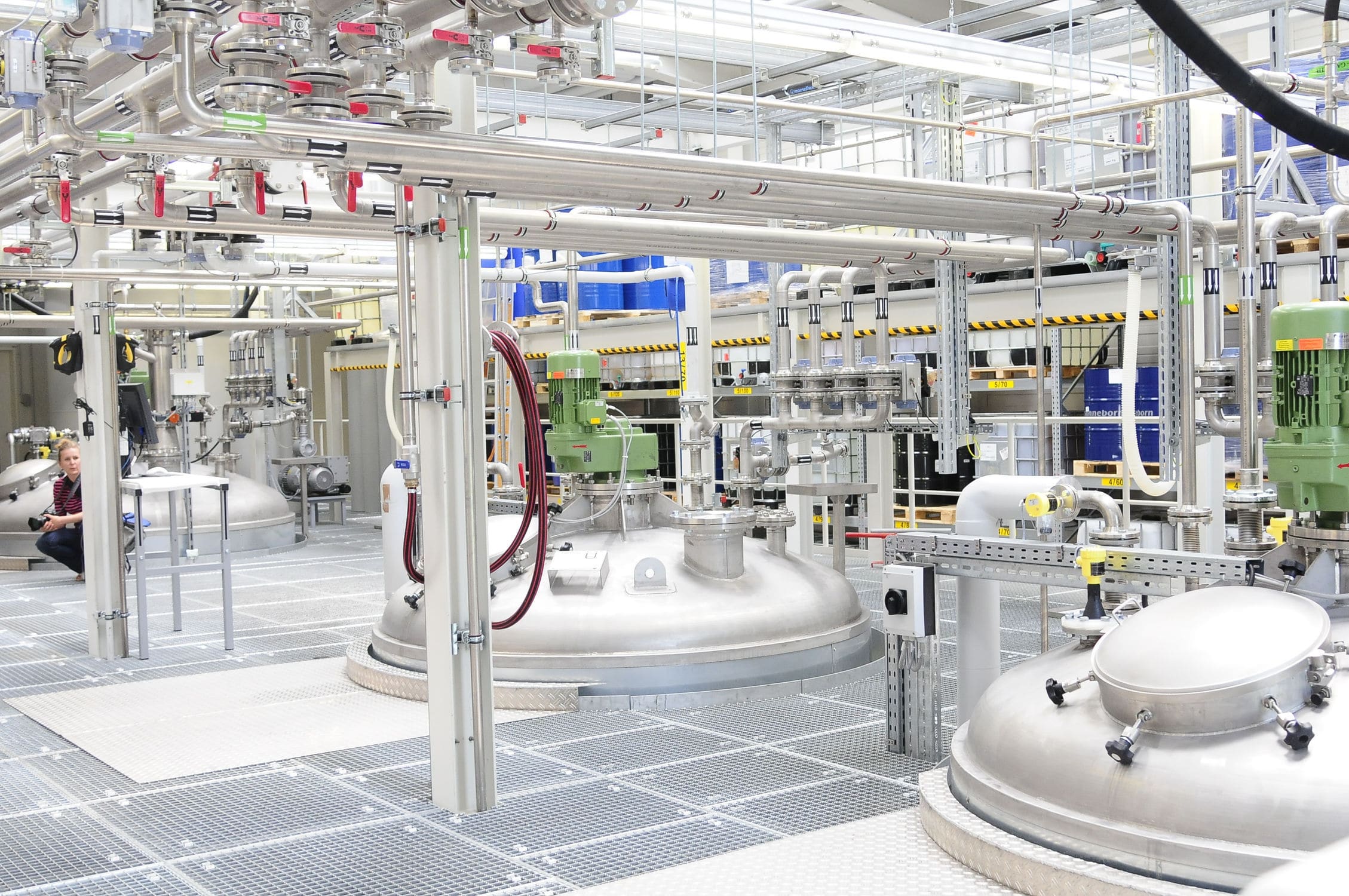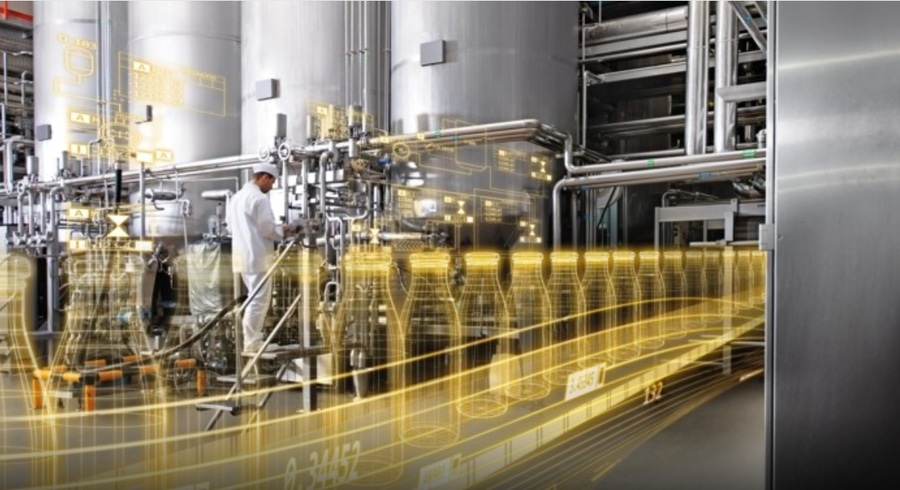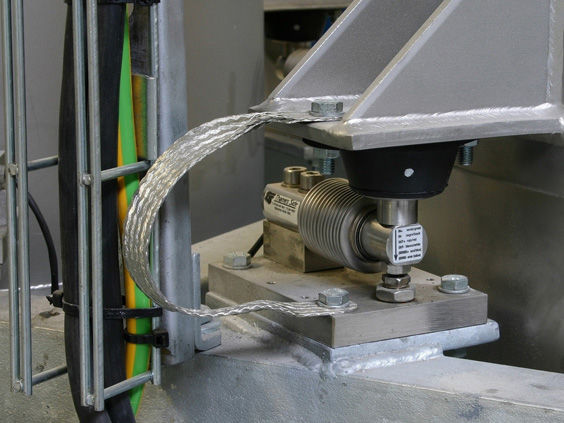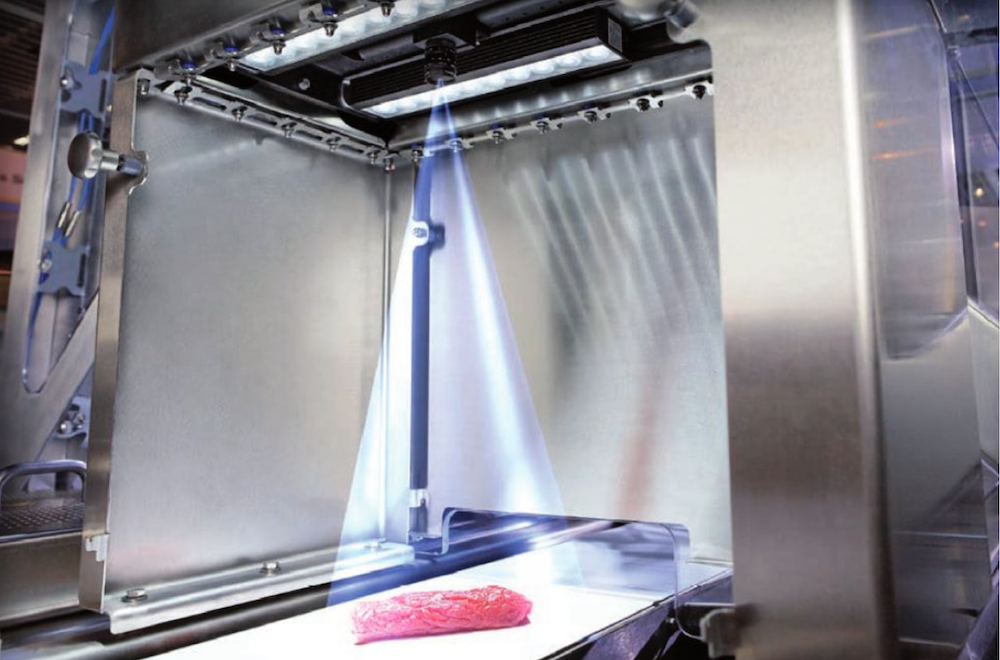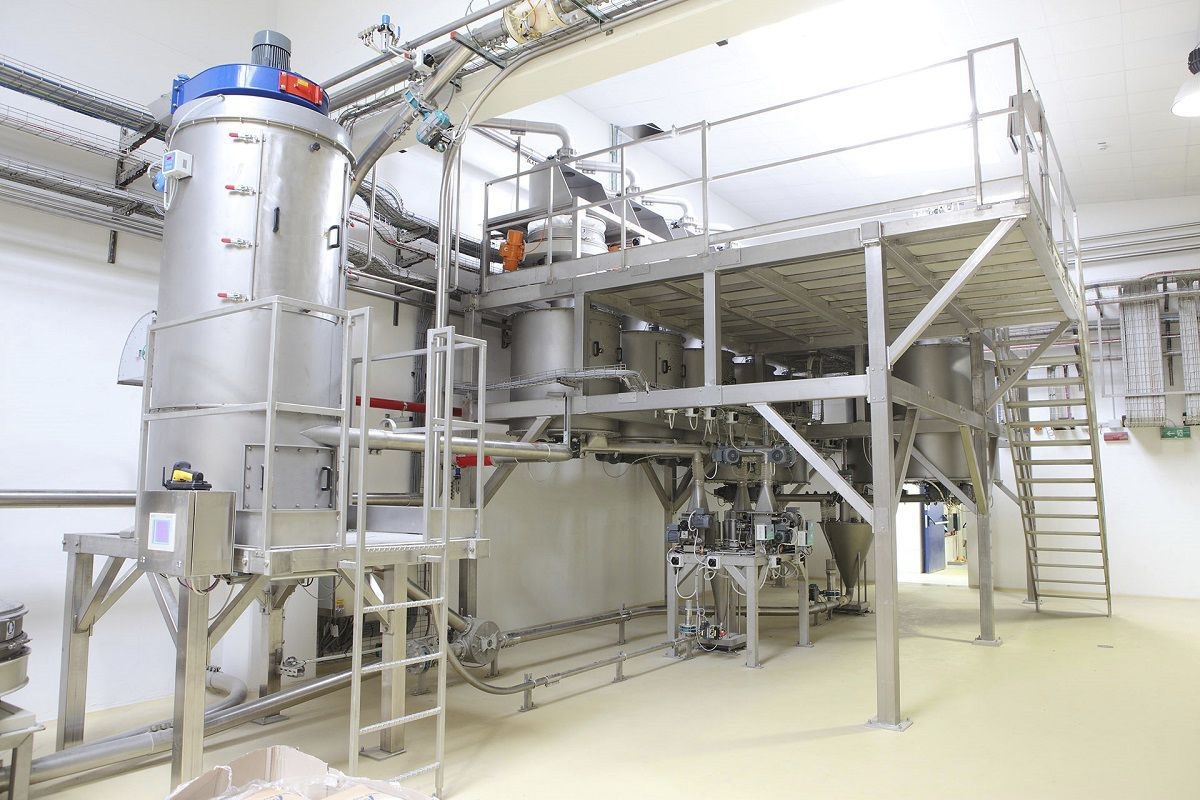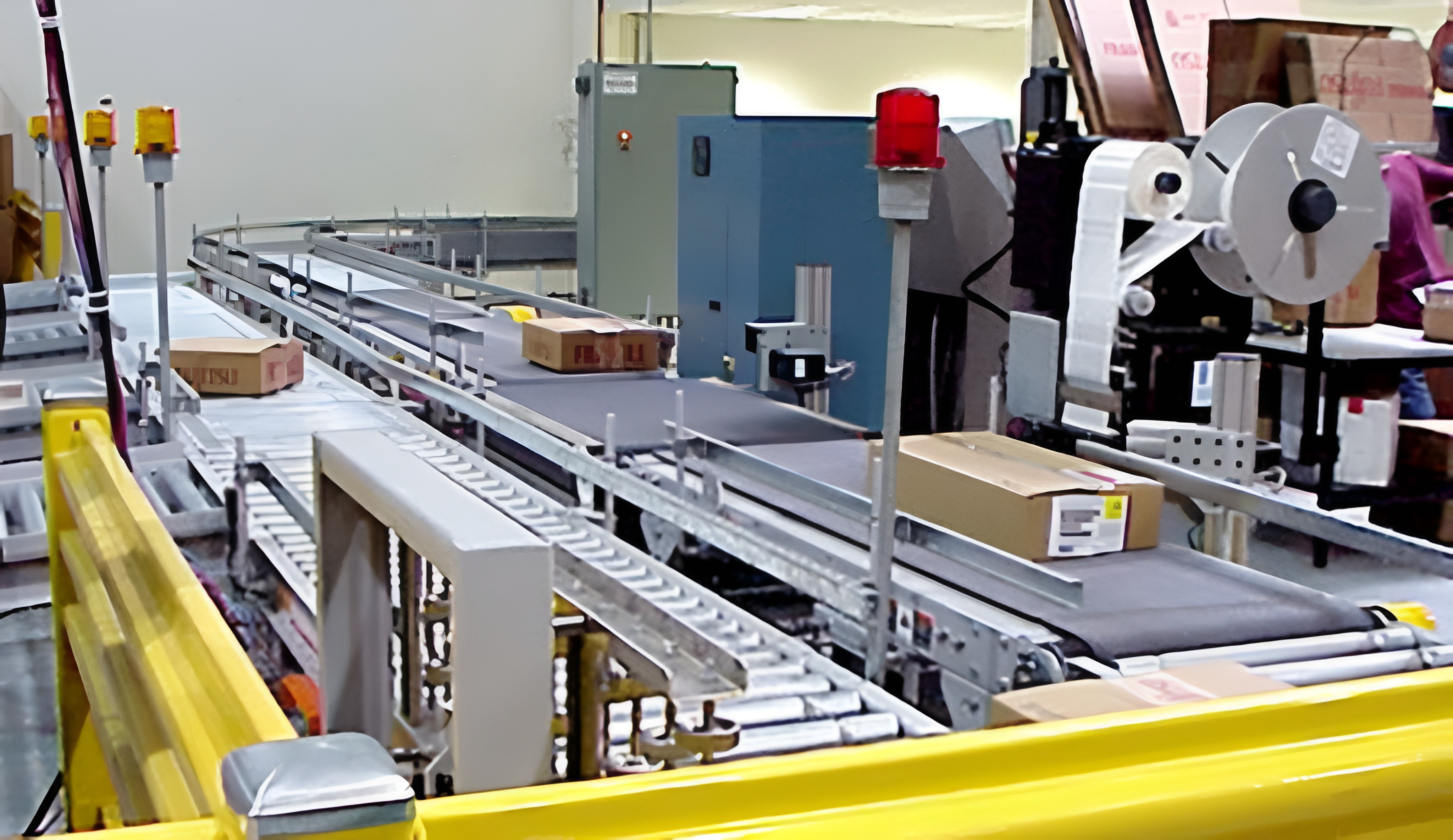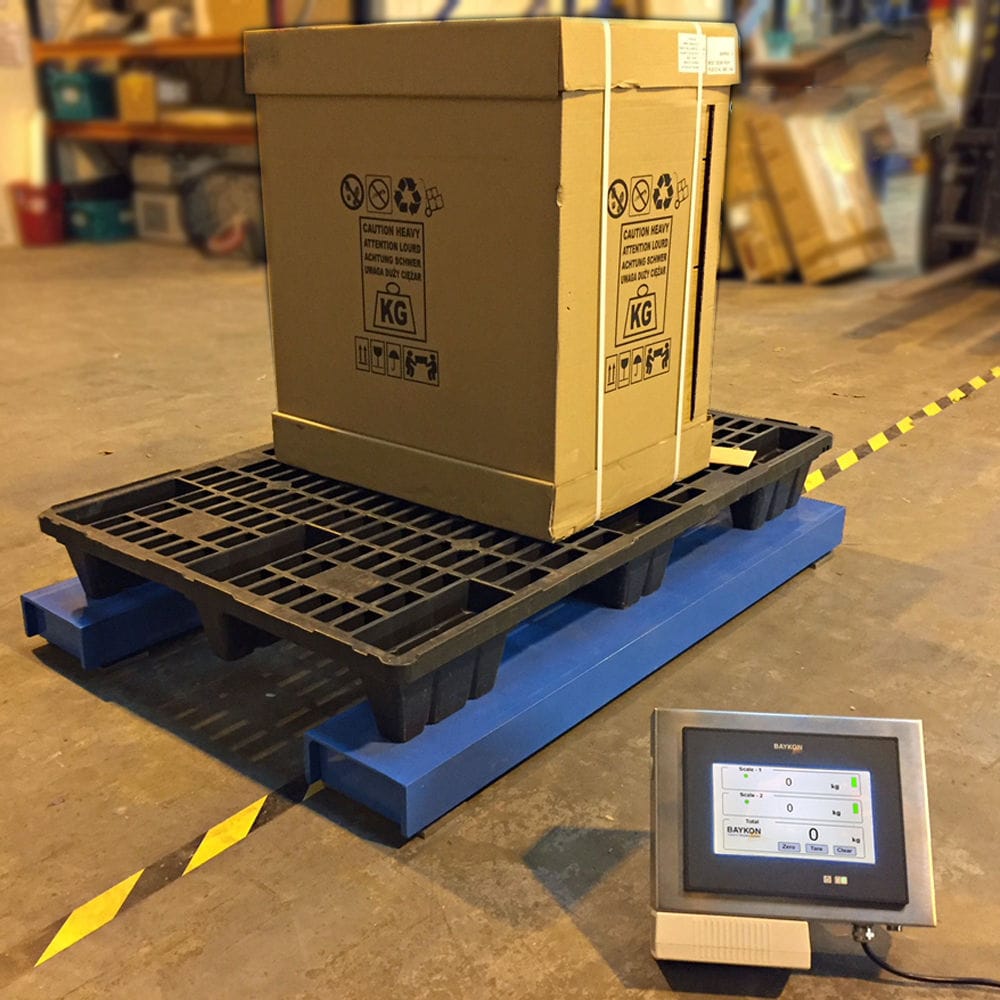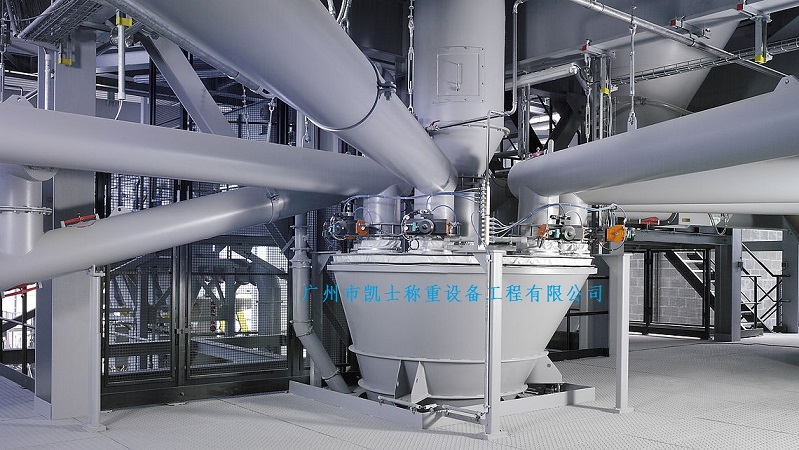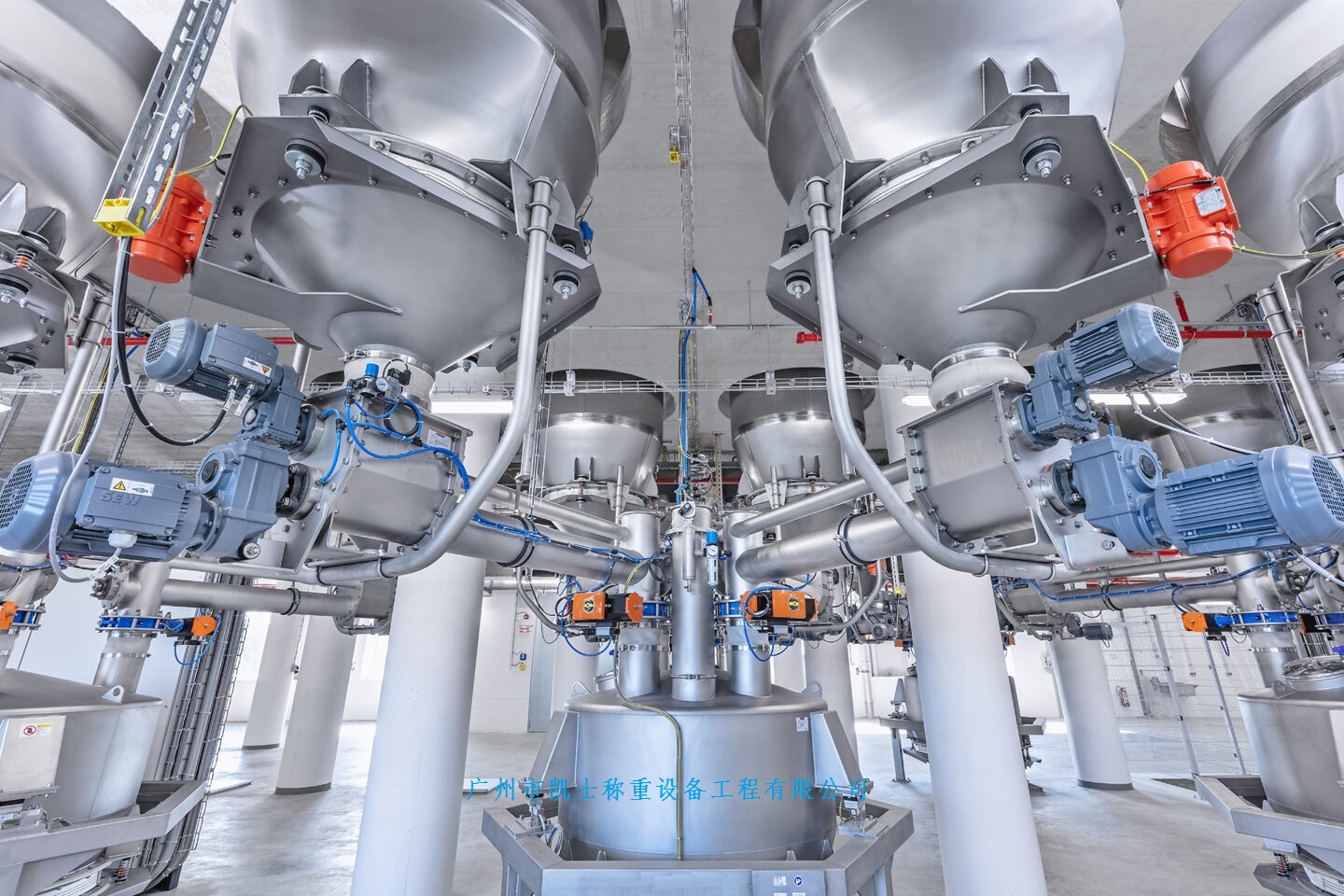

The feeding system collects and processes the detected signal, and sends control signals to various control units. The feeding screw conveyor releases the material to the hopper scale, causing A change in the weight of the hopper scale. This change changes the voltage signal output by the weighing module. The voltage signal enters the weighing instrument, undergoes A/D conversion, and converts the analog quantity into a digital quantity for display.
 020-34563445
020-34563445The feeding system selects the corresponding silo according to the designed formula. The control system sends the selected basic powder silo into the hopper scale through the horizontal screw conveyor in accordance with the required addition ratio and weight in the formula. The hopper scale weighs it. When the weight required in the formula is reached, the system automatically switches to another powder silo to continue working until all the powder silos in the formula have been added. Meanwhile, the batching scale works based on the same principle as the formula. When the above processes are completed, the large scale door opens for a delay, the small scale discharge door opens, and the material enters the mixer and starts to be mixed. When the mixing time is up, the discharge door of the mixer opens, and when the discharge time is up, the discharge door closes, and the next cycle begins. A system that can monitor the process of formula weighing and mixing in real time.
The feeding system collects and processes the detected signal, and sends control signals to various control units. The feeding screw conveyor releases the material to the hopper scale, causing A change in the weight of the hopper scale. This change changes the voltage signal output by the weighing module. The voltage signal enters the weighing instrument, undergoes A/D conversion, and converts the analog quantity into a digital quantity for display. Meanwhile, the weighing instrument communicates with the upper computer via the RS232 interface, sending this digital quantity to the upper computer. Through the I/ O board control, the switch quantity is sent to the PLC unit. At the same time, the weighing instrument compares this weight with the set value inside the instrument. When the set weight is reached, a switch signal is output to the PLC. The PIC controls the frequency converter to gradually reduce the speed, calmly achieving slow feeding. When the set completed weight is reached, the motor stops rotating, thereby achieving the allocation of a certain material.




